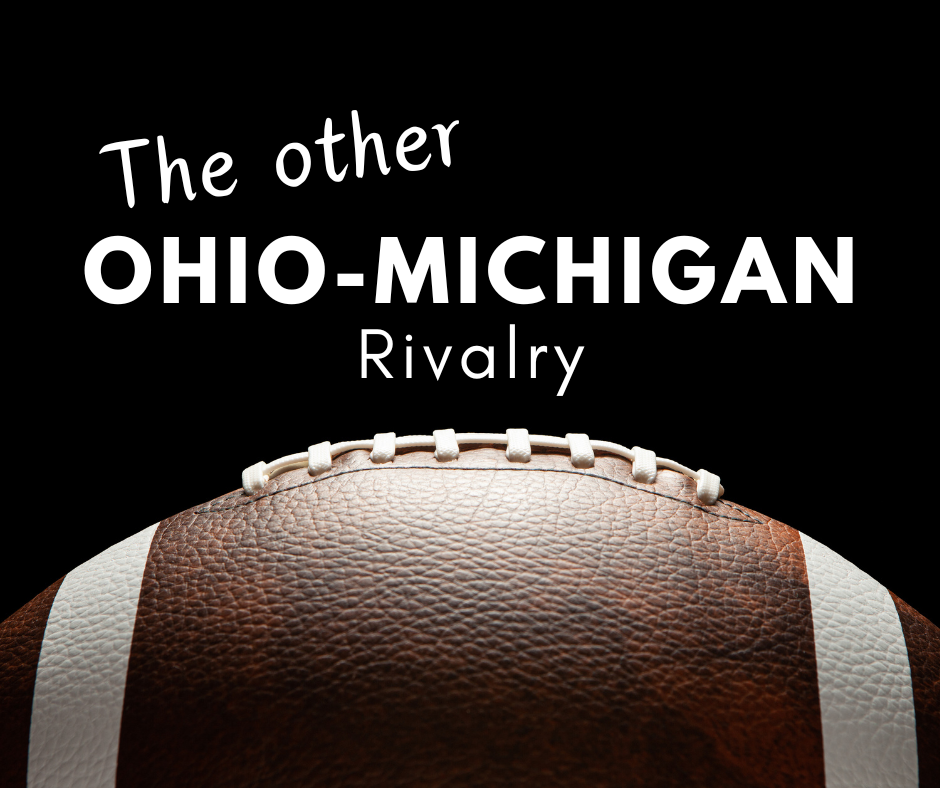INDUSTRY NEWS
The Other Ohio-Michigan Rivalry
Long-time adversaries battle it out on the road.

Whichever side they’re on, highway drivers crossing the Ohio-Michigan line notice contrasts in the road surfaces. For some, it’s a matter of smoothness. For others, it’s noisiness. But is there an actual difference?
It may be one of the country’s most prolonged and fiercest rivalries, pitting citizens from bordering states against each other. Often, with little more than bragging rights at stake, the competition intensifies historic grudge-holding, originating from a 19th-century land conflict known as the War of Toledo. Two hardy opponents battle for dominance and geographic pride.
Some might think this is about choosing teams in the annual Ohio State-Michigan college football matchup known as “The Game,” but this dispute is much more significant. Indeed, it’s about which of the two states has better roads.
Concrete vs. Asphalt
Aarne Frobom, a senior policy analyst with the Michigan Department of Transportation, was asked about the perceived dissimilarities by Detroit’s WXYZ 7 Action News in 2022.
“When people complain about rough or noisy roads or pothole roads, what they are reacting to in some cases is the difference between concrete roads and asphalt roads,” Frobom told WXYZ Traffic Anchor Ali Hoxie. He said drivers tend to find concrete roads noisier than those paved with asphalt.
Frobom says Michigan used concrete when building freeways in the 1950s to avoid rutting caused by heavy truck traffic. Ruts can retain rainwater and turn icy in freezing temperatures.
Conversely, the Federal Highway Administration reports that nearly 97 percent of Ohio paved roads have asphalt surfaces.
Are noise levels and ride smoothness enough to determine which state has the better roads? Probably not. Fortunately, there is a more scientific approach.
National Rankings
The Reason Foundation, a public policy research organization, publishes an Annual Highway Report rating US state highway systems. Using a cost versus quality method, Reason compares relative performance nationwide. Higher-rated states have above-average road conditions with relatively low per-mile costs.
In 2023, Reason ranked Ohio’s highway system 17th in the nation in cost-effectiveness and condition. Michigan, on the other hand, ranked 27th.
“To improve in the rankings, Michigan needs to improve its pavement quality and reduce its percentage of structurally deficient bridges,” says Baruch Feigenbaum, a senior managing director at Reason and the report’s lead author. “Michigan’s spending is lower than average, but its pavement and bridge quality is far below average.”
While Ohio tops Michigan and other nearby states, Indiana and Pennsylvania, in overall highway performance, there is room for improvement.
“Ohio’s administrative costs and urban arterial pavement condition are the state’s biggest weaknesses,” says Feigenbaum. “Ohio needs to reduce its administrative disbursements or have those costs translate into better system performance.”
A Tough Comparison
If conditions and costs can’t convince you which state has better roads, consider this. According to the Reason report, Ohio drivers spend 22.6 hours annually stuck in peak-hour traffic congestion, compared to 24.3 hours for Michigan commuters.
Ron Brenke, executive director of the American Society of Civil Engineers, told WXYZ 7 Action News that comparing the two states is complicated.
“Sure, you can compare them, but they are really two very different animals,” said Brenke. “The network that Ohio has is a lot larger than Michigan. They have more lane miles of road.”
Brenke says Michigan has underfunded its roads for years compared to Ohio. “I think the biggest difference between Ohio and Michigan is they have funded their roads a lot better over the past 20 years,” he says.
Fortifying Brenke’s point, Virginia’s highway system ranks first in Reason Foundation’s 2023 Annual Highway Report while ranking first in capital spending per mile.
The Michigan-Ohio State college football rivalry has endured for more than 100 years. And as both states like to say, there’s always next year.

